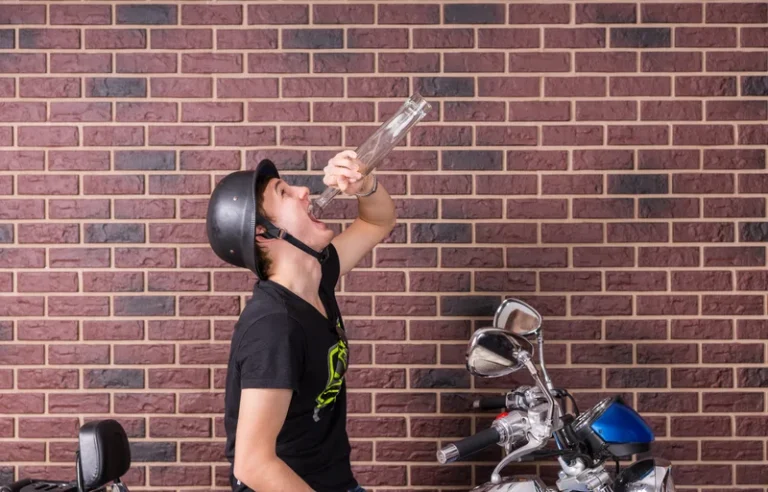
For some substances, such as opioids, the withdrawal symptoms are so severe that they create significant motivation to continue using them. The American Society of Addiction Medicine (ASAM) defines addiction as a chronic brain disorder. Addiction doesn’t happen from having a lack of willpower or as a result of making bad decisions. Addiction can significantly impact your health, relationships and overall quality of life. It’s crucial to seek help as soon as you develop signs of addiction. Addiction is a serious, chronic dependence on a substance or activity.
Shopping Addiction (Over-Shopping, Compulsive Shopping)

An agonist facilitates the activity of a neurotransmitter system, and antagonists impede neurotransmitter activity. Your brain and body’s reactions at early stages of addiction are different from reactions during the later stages. But just because addiction runs in the family does not necessarily mean a person will develop one. If you or someone you care about may have an addiction, talk to your provider right away. Your provider may want to do a physical exam and may request blood and urine tests.
- Although personal events and cultural factors affect drug use trends, when young people view drug use as harmful, they tend to decrease their drug taking.
- Cannabis often precedes or is used along with other substances, such as alcohol or illegal drugs, and is often the first drug tried.
- A substance addiction is a chronic condition that causes you to seek out and use substances despite harmful consequences.
- Fortunately, researchers know more than ever about how drugs affect the brain and have found treatments that can help people recover from drug addiction and lead productive lives.
- CBT and DBT significantly reduce relapse rates, making behavioral therapies a cornerstone of effective treatment, with both therapies having similar success rates of around 50-60%, as studied by First Session.
Cognitive control of behavior
Long-term use of hallucinogens poses significant health risks, particularly for mental health and cognitive functions. While physical dependence on these substances is rare, psychological addiction and persistent adverse effects occur in chronic users. If you or someone you addictive drugs definition know is living with addiction, you may feel overwhelmed and out of control.

Medication-Assisted Treatment (MAT)

Physical dependence involves changes in normal bodily functions—the user will experience withdrawal from the drug upon cessation of use. In contrast, a person who has psychological dependence has an emotional, rather than physical, need for the drug and may use the drug to relieve psychological distress. Tolerance is linked to physiological dependence, and it occurs when a person requires more and more drug to achieve effects previously experienced at lower doses. Tolerance can cause the user to increase the amount of drug used to a dangerous level—even to the point of overdose and death. According to this addiction definition, a person can be addicted to any substance, legal or illegal, as well as any behavior the addict finds pleasurable. Addiction is considered a mental illness and can be treated similarly to other mental illnesses with therapy, medication and lifestyle changes.

Assessment tools like the Addiction Severity Index (ASI), Substance Use Disorder Diagnostic Schedule (SUDDS), and CAGE-AID Questionnaire are commonly used to evaluate hallucinogen addiction. Medical and psychiatric evaluations help differentiate hallucinogen abuse from other mental health conditions, ensuring an accurate and comprehensive understanding of the addiction. Hallucinogens work on the brain by disrupting neurotransmitters responsible for regulating mood, perception, drug addiction and cognition, particularly serotonin and dopamine.
What is the difference between substance use and substance use disorder?
Addiction is an inability to stop using a substance or engaging in a behavior even though it may cause psychological or physical harm. Despite being aware of these harmful outcomes, many people who use drugs continue to take them, which is the nature of addiction. Moderate alcohol consumption is defined as one drink per day for women and up to 2 drinks per day for men. Studies have revealed that this low to moderate alcohol use has been demonstrated to lower the risk of coronary artery disease. Of interest, more people have overcome their addiction than those enrolled in a program (eg, 12-step, CBT).36 For these reasons, consideration is necessary to treat an individual with addiction or not.
- Even when addicted individuals are aware of harmful effects, they may be unable to cease drug use or repetition of the behavior.
- Assessment tools like the Addiction Severity Index (ASI), Substance Use Disorder Diagnostic Schedule (SUDDS), and CAGE-AID Questionnaire are commonly used to evaluate hallucinogen addiction.
- Stopping some drugs then relapsing can heighten your risk of overdose, mental health problems, or other life-threatening medical complications, and should be done under medical supervision.
- An addiction is a disorder characterized by the compulsive use of a substance or activity that triggers our reward systems despite experiencing adverse consequences.
- This progression applies to ethanol, methanol, isopropanol, and ethylene glycol.
- They can lead to permanent health complications and serious consequences like bankruptcy.
Certain medications can help you relax after surgery if you’re in a lot of pain or manage an underlying chronic health condition. Some substances can even dust https://ecosoberhouse.com/ off your keyboard or keep a bouquet blooming. Substance use and substance misuse refer to occasional episodes of substance use rather than a chronic, habitual or patterned use that is substance use disorder. The exact thing you feel varies based on what substance you took, how much of the substance is in your body and if the substance is interacting with any other drugs or substances at the same time.
- The arts can be used as an assessment tool to identify underlying issues that may be contributing to a person’s substance use disorder.
- It may be done by family and friends in consultation with a health care provider or mental health professional such as a licensed alcohol and drug counselor, or directed by an intervention professional.
- A person’s genes and environment influence this complex condition.
- Substances send massive surges of dopamine through your brain, too, as well as certain activities, like having sex or spending money.
- Therefore, if you suspect an overdose in one child while other children are around, those other children may have taken the medication, too.
- SAMHSA works to prevent and treat mental and substance use disorders and provide supports for people seeking or already in recovery.
- In addition, one should avoid bupropion in patients with a current or past history of eating disorders, as this lowers the threshold for seizure side effects.
Hallucinogen addiction is relatively rare compared to other forms of substance use disorders, but its prevalence is increasing in some demographics. In the United States, the National Survey on Drug Use and Health 2021 reported that approximately 2.6% of individuals aged 12 and older had used hallucinogens in the past year, reflecting a rising trend. Globally, hallucinogen use remains less common than substances like alcohol or opioids, but patterns of recreational use and misuse vary widely across regions. Dependence develops in people using hallucinogens for self-medication or as part of polydrug abuse. Hallucinogen addiction is the compulsive use of hallucinogenic drugs, which are substances that alter perception, mood, and thought by disrupting communication between brain regions and neurotransmitter systems. The effects of these drugs on serotonin receptors create a cycle of seeking altered states, contributing to addiction risk, particularly in vulnerable individuals.

